Today Current Affairs: 12th October 2021 for UPSC IAS exams, State PSC exams, SSC CGL, State SSC, RRB, Railways, Banking Exam & IBPS, etc
Table of Contents
The Indian Air Force (IAF):

The Indian Air Force (IAF) have recently taken many steps towards ramping up the air defence ecosystem in order to get strategic advances over their enemy.
- In a whopping ₹48,000 crore deal with state-run aerospace & defence company Hindustan Aeronautics Ltd (HAL), the Indian government ordered 83 Light Combat Aircraft (LCA) Tejas for the Indian Air Force in February this year.
- In a landmark ₹22,000 deal inked by the Indian government with Airbus Defence, Spain the Indian Air Force is set to welcome Fifty Six (56) C-295 transport aircraft.
- Under the deal, the IAF fleet will receive 16 aircraft in flyaway condition within the span of 48 months, while a consortium of the Airbus Defence and Space and Tata Advanced Systems Limited (TASL) will manufacture 40 planes in domestically within 10 years of signing the contract.
- The Indian Air Force (IAF) is set to acquire 24 second-hand Mirage 2000 fighters, made by French manufacturer Dassault Aviation. The Indian government recently inked a deal to buy phased-out Mirage 2000 aircraft from the French Air Force.
- Apart from fighter aircraft, the IAF is also set to acquire Akash missiles, manufactured by India’s manufacturers of ammunitions and missile systems Bharat Dynamics Limited (BDL). The ₹499 crore contract was signed by the two in July 2021.
- Under the ₹155 crore pact, the Indian Air Force is also scheduled to induct Counter Unmanned Aircraft Systems (CUAS) manufactured by Hyderabad-based Zen Technologies.
- This will be carried out in a 12-month time frame, and the technology will improve the IAF’s capabilities in the anti-drone space.
WMO Report On Terrestrial Water Storage (TWS) Loss:
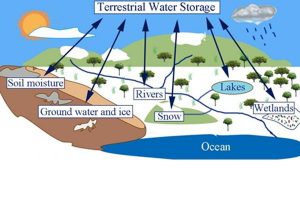
A report on terrestrial water storage (TWS) loss- 2021 State of Climate Services- was recently released by the World Meteorological Organization (WMO).
- Terrestrial water storage (TWS) is the sum of all water on the land surface and in the subsurface, ie surface water, soil moisture, snow and ice and ground water.
Highlights of the report:
- Overall, terrestrial water storage (TWS) dropped at a rate of 1 cm per year in 20 years (2002-2021).
- The biggest losses have occurred in Antarctica and Greenland.
- Many highly populated, lower latitude locations have also experienced TWS losses.
- India is the ‘topmost hotspot of TWS loss’: India has recorded the highest loss in terrestrial water storage if the loss of water storage in Antarctica and Greenland is excluded.
- In India, the TWS has been lost at a rate of at least 3 cm per year. In some regions, the loss has been over 4 cm per year too.
- The northern part of India has experienced the maximum loss within the country.
Indian scenario:
- In India, per capita water availability is reducing due to an increase in population.
- The average annual per capita water availability has been consistently decreasing. It reduced to 1,545 cubic metres in 2011, from 1,816 cubic metres in 2001.
- It is projected to further decrease to 1,367 cubic metres in 2031, according to the Union Ministry of Housing and Urban Affairs.
- Five of the 21 river basins in India are ‘absolute water scarce’ (per capita water availability below 500 cubic metres).
- By 2050, six will become absolute water scarce, six will become water scarce and four will become water stressed.
United Nations Human Rights Council (UNHRC):
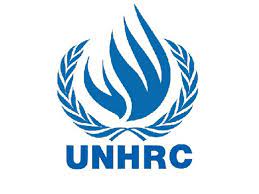
The United Nations Human Rights Council (UNHRC) unanimously voted for recognising a clean, healthy and sustainable environment as a Universal Human Right.
- If recognised by all, the right will be the first of its kind in more than 70 years since the Universal Declaration of Human Rights (UDHR) was adopted by the UN General Assembly in 1948.
- UDHR: The 30 rights and freedoms include civil and political rights, like the right to life, liberty, free speech and privacy and economic, social and cultural rights, like the right to social security, health and education, etc.
- The concept of human rights in general emerged after the Second World War (1939-45), but the right to a healthy environment, as one of those human rights, was never a priority.
- The right to a clean environment is rooted in the 1972 Stockholm Declaration, popularly called as the Magna Carta of human environment.
- It contained principles and recommendations for environmental policy.
- ‘Caring for the Earth 1991’ and the ‘Earth Summit’ of 1992” also declared that human beings are entitled to a healthy and productive life in harmony with nature.
- The human right to a healthy environment brings together the environmental dimensions of civil, cultural, economic, political, and social rights, and protects the core elements of the natural environment that enable a life of dignity.
- The right to life (Article 21) has been used in a diversified manner in India. It includes, inter alia, the right to survive as a species, quality of life, the right to live with dignity and the right to livelihood.
- Article 21 of the Indian Constitution states: ‘No person shall be deprived of his life or personal liberty except according to procedures established by law.’
- Further the Constitutional (forty-second Amendment) Act, 1976 incorporated two significant articles viz. Article 48-A and 51A (g) thereby making the Indian Constitution the first in the world conferring constitutional status to the environment protection.
- Article 48-A: The State shall endeavour to protect and improve the environment and to safeguard the forests and wildlife of the country.
- Article 51A(g): It is a duty of every citizen to protect and preserve the environment.
Global Multidimensional Poverty Index 2021:
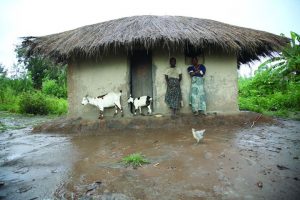
Global Multidimensional Poverty Index 2021 was released by the United Nations Development Programme (UNDP) and the Oxford Poverty & Human Development Initiative (OPHI).
- The Index considers data from 109 countries and 5.9 billion people.
Global Data:
- 1.3 billion people are multidimensionally poor.
- About half (644 million) are children under age 18.
- Nearly 85% live in Sub-Saharan Africa (556 million) or South Asia (532 million).
- More than 67% live in middle-income countries.
Periodic Reduction in Poverty:
- Of the 80 countries and five billion people for which there is data over time, 70 reduced MPI in at least one period, with the fastest changes coming from Sierra Leone (2013-2017), followed by Togo (2013/2014-2017).
Absolute Reduction in Poverty:
- Some countries saw the fastest absolute reductions in their poorest regions-helping to fulfil their pledge to leave no one behind.
- These areas include North Central in Liberia (2013–2019/2020) and Province 2 in Nepal (2016–2019).
Poverty Across Ethnic and Racial groups:
- In some cases, disparities in multidimensional poverty across ethnic and racial groups are greater than disparities across geographical subnational regions.
- Within a country, multidimensional poverty among different ethnic groups can vary immensely.
- Therefore different policy actions are needed to reduce multidimensional poverty.
Education:
- Worldwide about two-thirds of multidimensionally poor people (836 million) live in households where no woman or girl completed at least six years of schooling.
- 227 million live in India.
- One-sixth of all multidimensionally poor people (215 million) live in households in which at least one boy or man has completed six or more years of schooling but no girl or woman has.
- The report also finds that women and girls living in multidimensional poverty are at higher risk of intimate partner violence.
Living Standard:
- 1 billion are exposed to solid cooking fuels, another billion live with inadequate sanitation and another billion have substandard housing.
- 788 million live in a household with at least one undernourished person.
- 568 million lack improved drinking water within a 30-minute round trip walk.
Indian Scenario:
- As castes and tribes are a more prevalent line of social stratification in India, this index presents the incidence and intensity of multidimensional poverty among castes and tribes and among individuals who are not members of any caste or tribe.
- In India five out of six multidimensionally poor people are from lower tribes or castes.
- 9.4% of the Scheduled Tribe group lives in multidimensional poverty
- 33.3% of the Scheduled Caste group lives in multidimensional poverty.
- 27.2% of the Other Backward Class group lives in multidimensional poverty.
- In India close to 12% of the population live in female-headed households.
About Multidimensional Poverty Index
- The Multidimensional Poverty Index was launched by the UNDP and the OPHI in 2010.
- MPI is based on the idea that poverty is not unidimensional (not just depends on income and one individual may lack several basic needs like education, health etc.), rather it is multidimensional.
- The index shows the proportion of poor people and the average number of deprivations each poor person experiences at the same time.
- MPI uses three dimensions and ten indicators which are:
- Education: Years of schooling and child enrollment (1/6 weightage each, total 2/6);
- Health: Child mortality and nutrition (1/6 weightage each, total 2/6);
- Standard of living: Electricity, flooring, drinking water, sanitation, cooking fuel and assets (1/18 weightage each, total 2/6).
Rail Link Between Nepal And India:
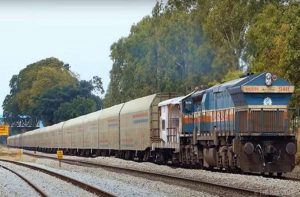
The first stretch of rail link between Nepal and India is ready to resume on the neighbouring country’s first-ever broad gauge passenger service (Jainagar-Bijalpura-Bardibas railway project).
- The rail link between Nepal and India has been popular since the early 20th century.
- In 1937, the British had built a narrow gauge line to ferry cargo, mainly logs, from Nepal to India.
- However, over time it became a popular passenger service before it was stopped in 2014 for conversion to broad gauge.
Revamped Project:
- First Stretch: A 34-km line between Bihar’s Jainagar and Nepal’s Kurtha, with the Hindu pilgrimage city of Janakpur Dham (in Nepal) in between.
- Second Stretch: A 17 km of railway line from Kurtha to Bijalpura is also getting the finishing touches.
- For the remaining portion up to Bardibas, land is being handed over to IRCON International Limited (a Government of India Undertaking).
- Cost of Project: The construction cost of Rs 784 crore for the entire stretch is being borne by India in the form of a grant to Nepal.
- Managing Body: The Konkan Railway Corporation Limited has got the contract for operations and maintenance of the line, and will train and develop manpower provided by Nepal, as per the bilateral understanding.
Electric Rail Track:
- MoUs have been signed between both the governments for laying an electric rail track linking Kathmandu with Raxaul (Bihar) in India.
- Freight Train Services:
- India and Nepal have signed a Letter of Exchange (LoE) to the India-Nepal Rail Services Agreement (RSA) 2004.
- It will allow all authorized cargo train operators to utilize the Indian railway network to carry Nepal’s container and other freight – both bilateral between Indian and Nepal or third country from Indian ports to Nepal.
Mission Lucy: NASA:

National Aeronautics and Space Administration (NASA) is set to launch ‘Lucy’, its first mission to explore the Jupiter Trojan Asteroids.
Mission Lucy:
- The solar-powered mission is estimated to be over 12 years long, during which the spacecraft will visit eight asteroids covering a distance of about 6.3 billion km to deepen the understanding of the “young solar system”.
- The mission is named after ‘Lucy’, a 3.2 million-year-old ancestor who belonged to a species of hominins (which include humans and their ancestors). The spacecraft will be launched on an Atlas V 401 rocket.
- The spacecraft’s first encounter will be with an asteroid that lies in the main belt that can be found between Mars and Jupiter. This asteroid is named ‘Donald Johnson’ after the paleoanthropologist who discovered the fossilised remains of ‘Lucy’.
- The Trojan asteroids are believed to be formed from the same material that led to the formation of planets nearly 4 billion years ago when the solar system was formed.
- Therefore, the mission is designed to understand the composition of the diverse asteroids that are a part of the Trojan asteroid swarms, to determine the mass and densities of the materials and to look for and study the satellites and rings that may orbit the Trojan asteroids.
- Studying them will help scientists understand its origins and evolution, and why it looks the way it does.
Quarterly Employment Survey (QES):
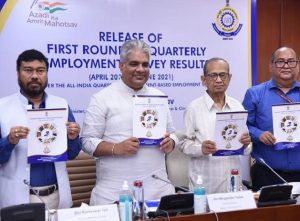
The Labour Bureau, Ministry of Labour and Employment released the results of the Quarterly Employment Survey (QES) for the First Quarter (FQ) of 2021 (April to June).
QES Survey:
- The Quarterly Employment Survey (QES) is part of the All-India Quarterly Establishment-based Employment Survey (AQEES).
- It covers establishments employing 10 or more workers in the organised segment in 9 sectors.
- The 9 sectors are Manufacturing, Construction, Trade, Transport, Education, Health, Accommodation and Restaurants, IT/BPO, Financial Service
- Objective: To enable the government to frame a “sound national policy on employment.”
- India ratified the International Labour Organization’s (ILO) Employment Policy Convention, 1964, in the year 1998, which requires the ratifying countries to implement “an active policy designed to promote full, productive and freely chosen employment.” India does not have a National Employment Policy (NEP) yet.
Highlights of QES 2021 Data:
- Shows a 29% increase in employment in nine sectors during the peak Covid-19 months of April-June 2021 over a base of 2013-14 (Sixth Economic Census – EC).
- There has been a decline in the share of female workers. From 31% in the 6th EC (2013) to 29% in QES (2021) data.
- Out of the 9 sectors, 7 sectors saw growth in employment while only 2 sectors (Trade, and Accomodation & Restaurants) saw a decline in employment figures.
- The IT/BPO sector saw the most growth of 152% during 2013-2021 period.
- Between 1998-2021, there has been an absolute increase in employment figures. Since 1998 (4th EC), the highest growth rate in employment (38%) was in the period 2005-2013.
- The simple growth rate of employment between 1998-2021 has been fluctuating, and not linear.
River Ranching Programme:

Nationwide River Ranching Programme was recently launched in Uttar Pradesh.
- Along with Uttar Pradesh, other 4 states namely, Orissa, Uttarakhand, Tripura and Chhattisgarh also participated in the launch of ‘nationwide River Ranching program’.
- 3 lakhs fingerlings were ranched at 3 sites in UP, namely, Brijghat, Tigri, Meerut, Garhmukteshwar and Bijnor.
- River Ranching is a form of aquaculture in which a population of a fish species (such as salmon) is held in captivity for the first stage of their lives.
- They are then released, and later harvested as adults when they return from the sea to their freshwater birthplace to spawn.
About the Programme:
- River ranching programme was introduced as special activity under the ‘Pradhan Mantri Matsya Sampada Yojana (PMMSY) scheme to augment and enhance fish production and productivity by expanding, intensifying, diversifying and utilizing land & water productively.
- National Fisheries Development Board, Hyderabad is the nodal agency under central component of the PMMSY




